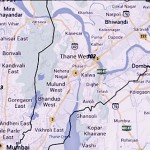The practice of transport demand modelling has not changed much over the last few decades where the estimation is still primarily manual survey based. Accurate and up-to-date information about mobility patterns is essential for city authorities to make investment decisions on transport infrastructure improvements that give the maximum bang for the buck. Up-to-date mobility demand estimate is also needed for providing a well-designed and efficient public transport network. However, obtaining survey based demand estimates is time consuming and sometimes error prone. Hence, such surveys are carried out only once every few years due to practical reasons. These estimates can quickly get out of date for fast growing and evolving cities in India. Is there a better way to obtain accurate and up-to-date mobility information? Ask authors Amrithanshu Sinha, Kruti Barot, Tapas Saini and Rajesh Krishnan
 India has a tele-density of almost 80% based on the latest available figures; this figure exceeds 100% in major cities. Telecom systems keep track of where our mobile phones are at all times so that an incoming call can be routed to the phone. Hence, information about the actual mobility pattern of a large percentage of people across an area is already available with telecom operators. However, this amounts to huge volumes of data.
India has a tele-density of almost 80% based on the latest available figures; this figure exceeds 100% in major cities. Telecom systems keep track of where our mobile phones are at all times so that an incoming call can be routed to the phone. Hence, information about the actual mobility pattern of a large percentage of people across an area is already available with telecom operators. However, this amounts to huge volumes of data.
Recent advances in computing power, storage and big data technologies have made it possible for the transport community to put this data to practical use. A number of tools and methods have been developed by practitioners and academics over the last five years or so to process this mobile phone data source for demand estimation. For example, Shaleen Srivastava and his team at Jacobs in the UK have developed a data fusion technology called TDiF to process anonymous mobile phone data to estimate travel patterns and trip matrices. This technology has been used for a number of projects using data from Telefonica, the mobile phone operator with the highest market penetration in the UK. The application of this technology for the M25 Junction 30 Congestion Relief Scheme recently won an award from ITS-UK for the best use of new technology in the highway industry.
 However, notwithstanding the fact that industry and government clients have started to accept traffic estimates generated using mobile phone data, there is an industry wide debate going on about the best practices of using mobile phone data in the transport sector.
However, notwithstanding the fact that industry and government clients have started to accept traffic estimates generated using mobile phone data, there is an industry wide debate going on about the best practices of using mobile phone data in the transport sector.
Transport Systems Catapult, a technology and innovation centre set up by Innovate-UK with a focus on intelligent mobility recently carried out a widespread consultation on the use of mobile phone data for transport modelling. It is in this context that a proof-of-concept of this technology was used to estimate travel demand for South Mumbai as a part of a Department of Electronics and Information Technology funded project by a joint team of C-DAC and ITSPE.
What is Mobile Phone Data?
Mobile phone data is a generic term and there are a number of datasets that can be obtained from telecom systems. The most easily available data are the Call Data Records (CDR). Mobile operators record the cell tower a phone is connected to and the timestamp of each activity, e.g. whenever a call is made or an SMS is sent, for billing purposes. Telecom providers are generally allowed to share this data after stripping out all personal details from the CDR and
after anonymising the IMEI number of the phone without violating the privacy of users. If the anonymisation scheme remains the same over the period over which the data are provided, it is possible to build up a picture of daily movement patterns of each phone over multiple days.
 TrafficInfraTech Magazine Linking People Places & Progress
TrafficInfraTech Magazine Linking People Places & Progress

